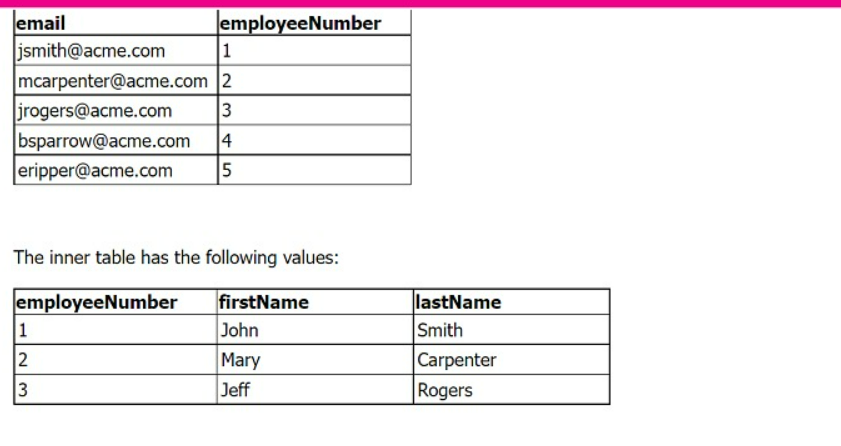Curious about Actual Splunk Core Certified Power User (SPLK-1002) Exam Questions?
Here are sample Splunk Core Certified Power User (SPLK-1002) Exam questions from real exam. You can get more Splunk Core Certified Power User (SPLK-1002) Exam premium practice questions at TestInsights.
Two separate results tables are being combined using the |join command. The outer table has the following values:
Refer to following Tables

The line of SPL used to join the tables is: | join employeeNumber type=outer
How many rows are returned in the new table?
Correct : C
When performing an outer join in Splunk using the| join employeeNumber type=outercommand, it combines the rows from both tables based on theemployeeNumberfield. An outer join returns all rows from both tables, with matching rows from both sides where available. If there is no match, the result isNULLon the side of the join where there is no match.
In the provided tables, there are five rows in the first table and three in the second. Since it's an outer join, all rows from both tables will be returned. This means the new table will have a total of eight rows, combining the matched rows and the unmatched rows from both tables.
Splunk Documentation on thejoincommand.
Splunk Community discussions on the usage ofjoinand types of joins.
Start a Discussions
When using transaction, what is the default maximum span between events?
Correct : A
When using the transaction command in Splunk, the default maximum span between events is set to unlimited. This is indicated by the default value of maxspan=-1, which corresponds to an ''all time'' time range.
Start a Discussions
Which of the following commands connects an additional table of data directly to the right side of the existing table?
Correct : C
The appendcols command in Splunk is used to connect an additional table of data directly to the right side of the existing table. It appends the results of a subsearch as new fields to the current results, effectively adding columns to the existing table.
Start a Discussions
What are the expected search results from executing the following SPL command?
index=network NOT StatusCode=200
Correct : C
In Splunk, the NOT operator is used to exclude events from your search results. The searchindex=network NOT StatusCode=200will return all events in the 'network' index where the StatusCode is not 200. This includes events where the StatusCode field is present and has a value other than 200, as well as events where the StatusCode field is not present at all.
Start a Discussions
Which of the following is included with the Splunk Common Information Model (CIM) Add-on?
Correct : B
The Splunk Common Information Model (CIM) Add-on is a foundational component for many Splunk apps, providing a common framework for data normalization and field extraction. This add-on includes a set of pre-configured data models that are essential for consistent reporting, searching, and correlation across various types of data. These data models help standardize field names and event structures, ensuring that data from disparate sources can be queried in a uniform way. While the CIM Add-on facilitates the use of standardized sourcetypes and supports data validation, the primary feature it offers is the set of pre-configured data models which are crucial for maintaining consistency across different datasets.
Start a Discussions
Total 297 questions